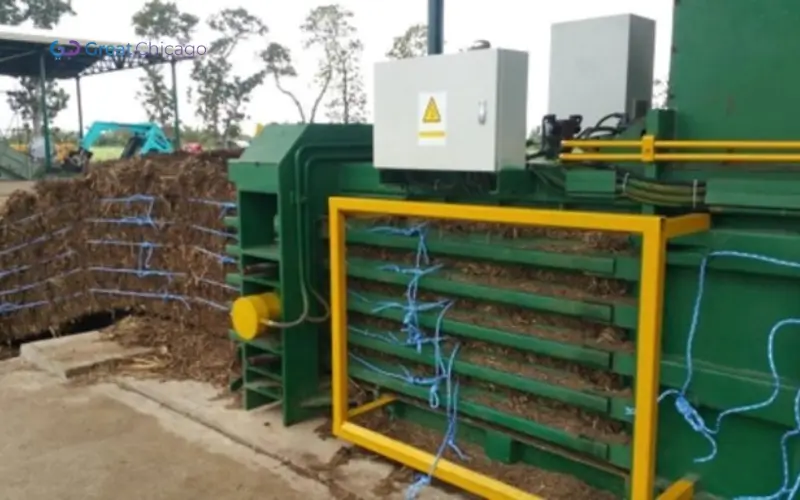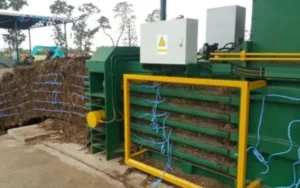Overview of Straw Press Facility
What is a Straw Press Facility?
As implied by its name, a straw press facility is a system designed to convert agricommodity straw into densified forms for example bales, briquettes or pellets. This includes the application of the straw compression technology in an attempt to ensure that straw is compact in order to enhance its storability as well as for easy transportation for purposes of recycling.
Using straw pressing in agriculture
In agriculture, straw bale pressing has significant and huge benefits because of the many residues crops produce during harvest time. Rather than decomposing straw on a field, or burning it which in turn pollutes the environment, farmers can recycle straw management systems which efficiently presses the straw into shapes.
Why Straw Pressing is Necessary for Organic Farming?
Benefits to the Environment
It is perhaps due to these reasons that straw pressing has so many advantages for the agricultural industry from an environmental perspective. By pressing straw for biomass, farmers are able to convert agricultural residues to energy rather than use it to create smog, a practice that would also cut emissions.
Pressing As a Method to Mitigate Agricultural Waste
The current process of straw bale pressing leads to minimization of the excessive straw bales accumulated in fields after the harvesting season. Contrary to decomposition or incineration that takes place leading to deterioration of the soil quality and pollution, compressed straws can be reused in areas.
A Straw Press Facility
Straw pressing technology
Straw pressing employs highly developed straw compaction technology to convert a vast amount of straw into smaller and easily movable masses. This technology is mostly represented by hydraulic equipment that presses the straw through a chamber to make the straw smaller and more manageable.
Straw Press – Various Categories
There are many classifications of straw press machines; the most recognized ones are the horizontal pressing system and the vertical pressing system. horizontal machines are suitable for continuous operation P 20 with large throughputs of straw material and the vertical systems are rather compact.
Advantages of Employing a Straw Press Center
Improved Biomass Production
A straw press facility is important to biomass straw handling systems as it turns waste into a valuable renewable resource- energy. Pressed straw can be processed for biomass fuel, which is an excellent substitute to the conventional fossil fuels in steam-generating power plants or heating systems. This plays a great role in the generation of clean energy hence breaking the dependency of energy on non-renewable resources.
Reducing the Overhead Cost of Straw Disposal
With straw press facility, farmers are in a position to avoid the various costs that are incurred during the process of straw disposal. By compacting the straw into forms of bales or pellets, burning or landfill disposal is not the best option compared to pressing events. Moreover, farmers can also utilize some of the compressed straw as biomass fuel or in other sectors such as animal bedding or organic manure- making resulting to an additional source of income.
Types of Straw Press Machines
Horizontal vs Vertical Pressing Systems
Depending on the type or model of the straw press machine most farmers may opt for horizontal pressing or vertical pressing systems. Horizontal systems are larger and thus suitable for producing high volumes of straw in a short time compared to vertical ones. Installing vertical pressing systems is cheaper and takes up relatively less space compared to other pressing systems, hence suitable for small-scale farming.
Selection Criteria for Vending Machines
There are a number of factors that determine the use of horizontal or vertical machines; size of operation, type of straw, and end product. For instance, straw pelletizing equipment is designed more so for creating a uniform type of pellet for biomass fuel; straw briquette machines are designed to produce dense blocks of straw good for heating purposes.
Straw Pressing for Biomass and Renewable Energy
How Straw is Processed into Biomass Fuel?
Straw is more on biomass fuel activities once they undergoes through baling, pelleting, or briquetting activities. The pressed straw herein can be combusted in biomass power plants or utilized in straw briquette machines to produce heat and electricity. This process assists non-renewable energy sources hence assisting the renewable energy sector and assisting combat climate change.
Straw in Sustainable Energy Generation
Straw has immense importance in biomass energy which is widely being used as a clean and renewable energy resource. If pressed and converted to biomass they can be directly used in biomass power plants as a substitute for coal or oil-based fuels. This also has the added advantages of replacing conventional energy and using waste products for a sustainable result in straw disposal.
Straw Recycling: An Eco-Friendly Alternative
Advantages of Recycling Straw for the Environment
The recycling of straw through a straw press facility was found to have numerous environmental advantages. First, it minimizes the extent to which straw is either dumped on the land or burned and this has negative impacts on soil and air respectively. However, the straw can be compacted and reused in different high-value goods such as biomass fuel, organic fertilizer, or animal litter. This leads to a decrease in the impact that is exerted on the environment by agricultural operations and practices that are sustainable.
How Straw Pressing Aids in Sustainability?
Hence adopting straw recycling systems it is evident that farmers can help in the cycle economy where as much waste as possible is recycled. Instead of discarding straw, more environmentally friendly straw processing plants let it be repurposed into other products that include renewable energy. It is environmentally friendly, cuts costs on waste and leans toward supporting the agricultural sector in the long run.
Straw Briquetting: A Step Towards Cleaner Energy
What is Straw Briquetting?
Straw briquette is defined as the formation of solid dense blockages commonly called briquettes through the compaction of straw materials. These briquettes are good Burners that can effectively replace regular fuels such as coal and in the process cause lesser pollution. Straw briquette machines are employed to make such solid blocs from agricultural waste, as an improved fuel source compared to those conventional methods.
How Does a Straw Press Facility Produce High-Quality Briquettes?
In a straw press factory, straw is compressed with hydraulic presses resulting in cylinder-shaped and hard-to-break briquets. These briquettes are good for use in biomass energy and can go through combustion processes in heating checks, power generators,s or even an industrial boiler. The practice of straw briquetting contributes to waste minimisation and also provides an opportunity of renewable and carbon–neutral energy source.
Problems Associated with Pressing Straw and Available Remedies
Various Issues in Straw Pressing Centres
Chiefly, the management of a straw press facility may bear certain difficulties like machinery maintenance, the fluctuation in the quality of the straw, and the need to dispose of the waste. However, some may have issues with compressing wet or over-dry straws depending on the machine that is used.
Pertinent Strategies for Optimal Performance
To deal with the above challenges operators should strive to adopt superior technologies in straw compression, technology that was developed to work with varying levels of moisture. The use of straw can also have an impact on the performance of the machine thus proper storage and maintenance of the straw will also play a big role.
Straw Pressing Facilities Prospects in Agriculture
Straw Pressing Technology and Its Evolution
There are good outlooks for straw press facilities since there is an ongoing enhancement of the straw compression technique. They are improvements in the machines where energy consumption is low compared to earlier models, shorter processing time, and flexibility in the machinery in that it can be used to process different types of agricultural residues.
Developments and Prospects
As will be discussed in the subsequent sections, the manipulations of biomass straw will increase its importance as the global demand for renewable energy intensifies. Improvement of new straw recycling systems and upgrading of straw pelletizing equipment will unceasingly advance environmentally friendly straw processing for the development of the agricultural industry and environmental protection.
FAQs
What is a straw press facility defined as?
A straw press facility is an integrated system for pressing and handling straws in a compact form such as bales.
Said briefly how does straw pressing assist in waste management?
Straw pressing makes work with straw easier, allowing people to store it, transport it, or recycle it without generating too much waste.
Is straw a candidate for biomass fuel?
Indeed, pressed straws can be successfully utilized as biomass fuel in power plants or heating systems.
What are the advantages of a facility such as a straw press?
Straw press facilities are environmentally friendly because these prevent straw burning thereby cutting air pollution.
How does the straw briquetting process work?
Straw Briquetting is the process of compacting straw as dense briquettes that are easier to handle and have a shorter burning time as fuel.








